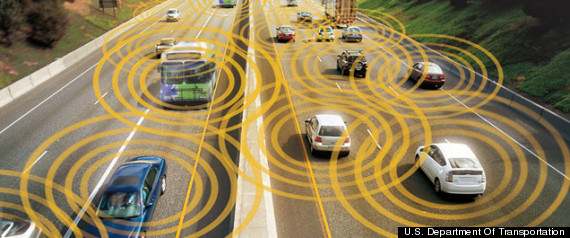A new V2V (vehicle to vehicle) communications system which allows for cars to talk to each other could lead to safer roads for the future.
The new system, which is linked to satellite navigation data, works out the vehicle's exact location, speed and direction, and transmits this to other vehicles via a wireless network, 10 times a second.
Crucially, the wireless communications are not at the mercy of visual barriers, so signals can be sent through obstructions and around corners, as was demonstrated at a recent transportation conference.
The demo consisted of a Ford Taurus' warning lights flashing as it came to a crossroads, causing the driver to break. The sudden decision to break seemed an inexplicable one as the traffic lights were on green and there didnt seem to be any obstruction ahead. However, a split second later, a car hurtles through the red lights, and across the path of the - now stationary - Taurus. The out of control car was not visible to the Taurus, due to a large parked truck, and had it not stopped, it would have been 'T-boned' as the runaway vehicle slammed into its side.
Fatal intersection collisions are extremely common in the US, with 7,800 in 2010 alone, and this has been a huge cause for concern for the National Highway Traffic Safety Administration.
David Strickland, administrator of the NHTSA, reported that V2V "is our next evolutionary step to make sure the crash never happens in the first place, which is, frankly, the best safety scenario we can all hope for."
There is no doubt that, in theory, this is impressive stuff, and with over 1000 volunteers set to begin real-world testing in Michigan later this year, we could be seeing this kind of technology sooner rather than later.
Earlier this year we brought you an article about self-drive cars, and the fact that motorists were sceptical about the idea, perhaps this notion of the hyper intelligent car is the happy medium that motorists are looking for.








